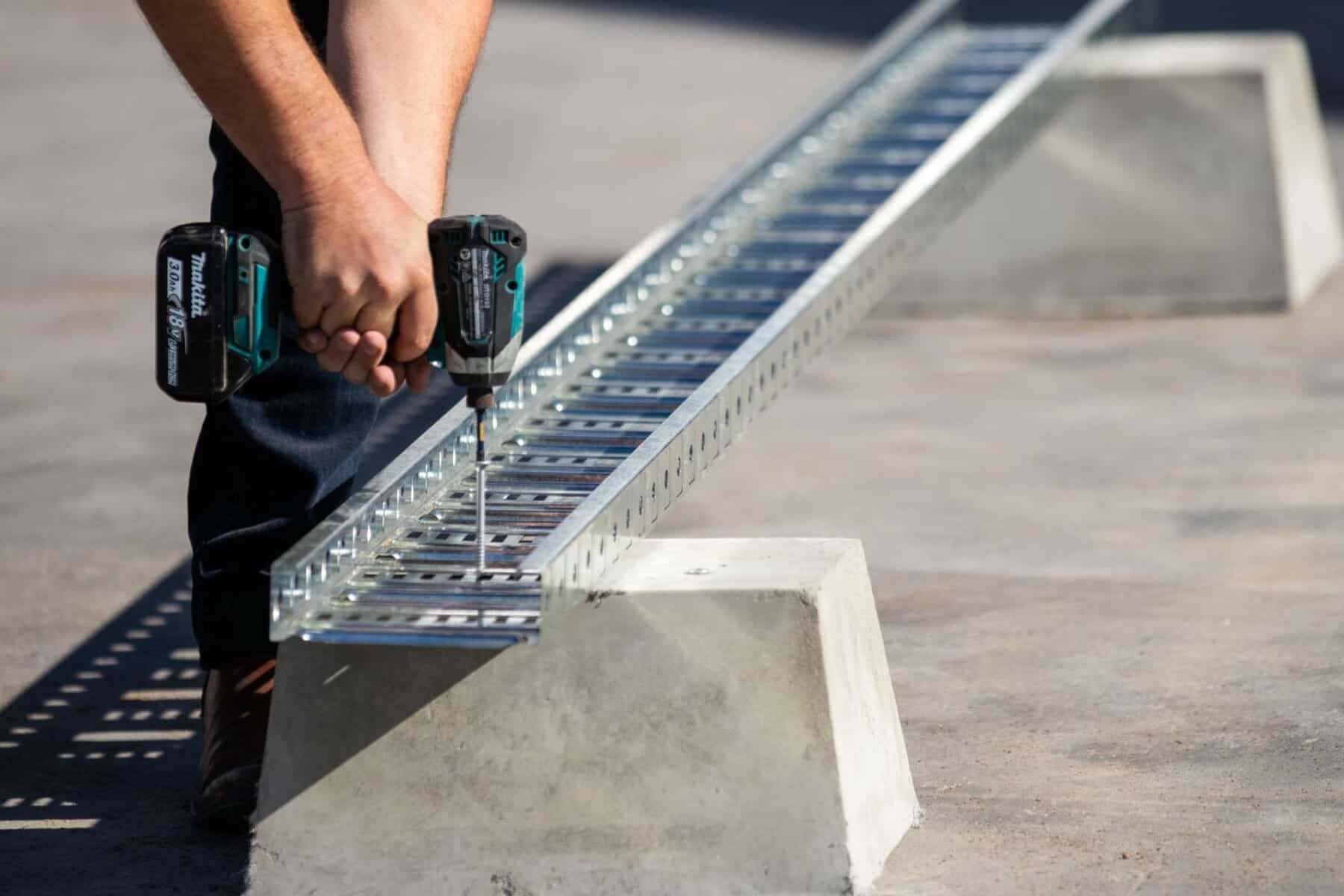
EvoCrete The ultralightweight, reinforced concrete blocks revolutionising the gas, mining
Units: Lightweight plain gray concrete block (CMU), 8" x 8" x 16" (nom.) Reinforcement: #6 vertical reinforcement at 32" on center 9-gaugejoint reinforcement at 16" o.c. (every other course) flashing: Base flashing and weeps. mortar: Type N, Portland cement /lime, plain gray. Joints: Concave tooled.

Concrete Masonry Retaining Walls CMU Wall Retaining Wall Companies
In most cases, vertical reinforcement is positioned towards the interior face of below grade walls to provide the greatest resistance to soil pressures. A solid top course on the below grade concrete masonry wall spreads loads from the building above and also improves soil gas and termite resistance.
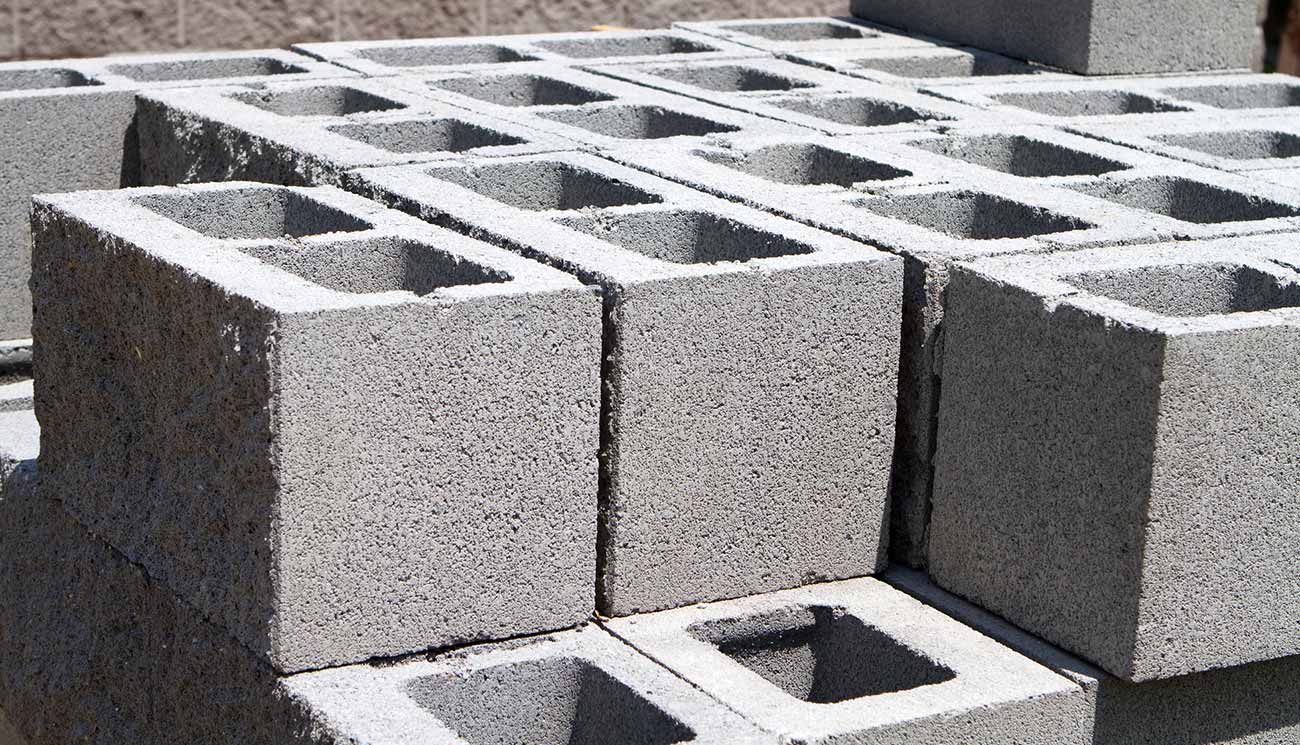
How To Build CoreFilled Reinforced Concrete Block Walls Structural Reporting
Reinforced concrete is a combination of traditional cement concrete with reinforcements (steel bar). This combination is made to use the compressive strength of concrete and tensile strength of steel at the same time, hence, work together to resist many types of loading.
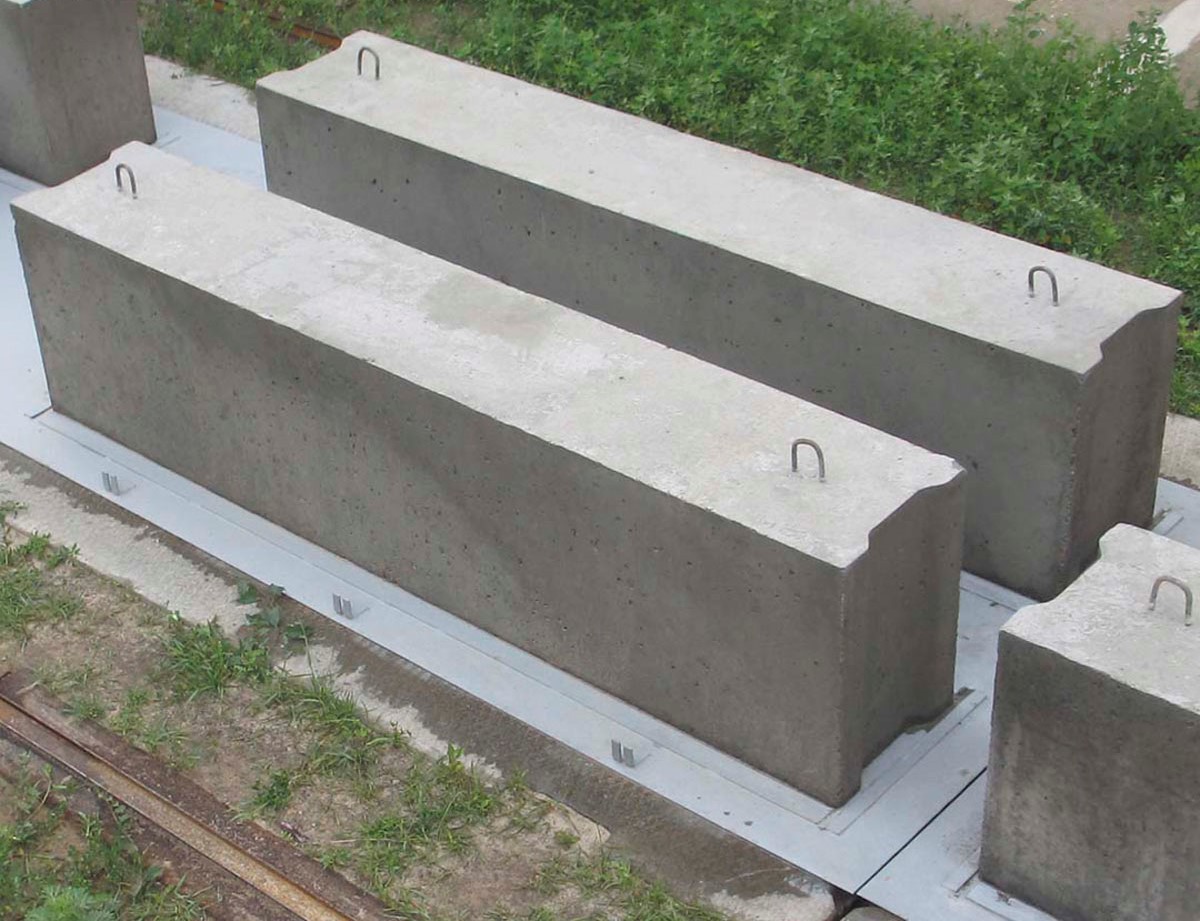
Reinforced concrete foundation blocks concrete products in the construction of the foundation
Reinforcement incorporated into concrete masonry structures increases strength and ductility, providing increased resistance to applied loads and, in the case of horizontal reinforcement, to shrinkage cracking. Specifications governing material requirements are listed in Table 1. Table 1—Masonry Material Specifications CONSTRUCTION METHODS

Steel reinforced concrete blocks for the construction industry Stock Photo Alamy
reinforced concrete, concrete in which steel is embedded in such a manner that the two materials act together in resisting forces. The reinforcing steel—rods, bars, or mesh—absorbs the tensile, shear, and sometimes the compressive stresses in a concrete structure.

Reinforced concrete blocks stock photo. Image of block 231735110
A reinforced hollow concrete block column (HBC) and an ordinary reinforced concrete column (RCC) with a cross-section size of 150 mm × 150 mm and a length of 1500 mm were produced using the same materials used for the beams. Moreover, the longitudinal reinforcement was made with 4 reinforcing bars having a 10 mm diameter, while the shear.
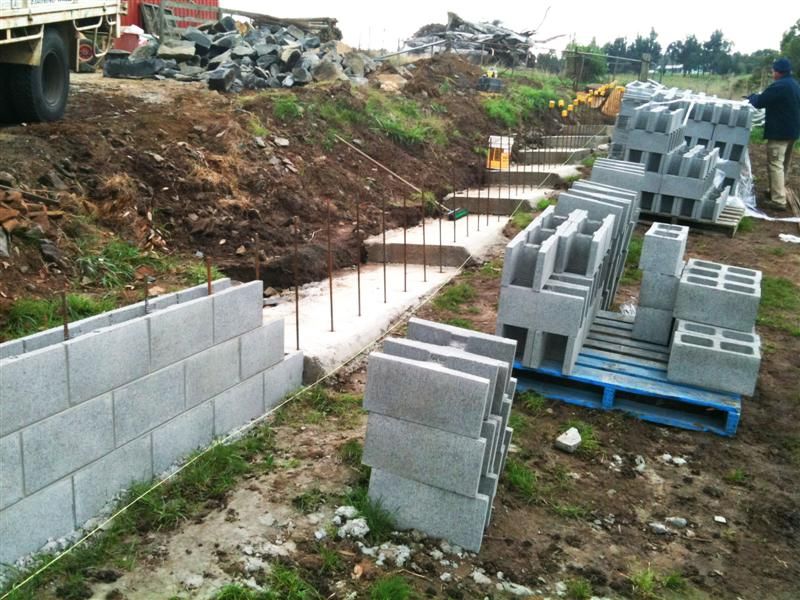
Reinforced Block Retaining Wall 4 Island Block Pavers
= depth of the effective compression block in a concrete beam = name for area = gross area, equal to the total area ignoring any reinforcement = area of steel reinforcement in concrete beam design = area of steel compression reinforcement in concrete beam design = area of steel reinforcement in concrete column design = area of concrete shear st.
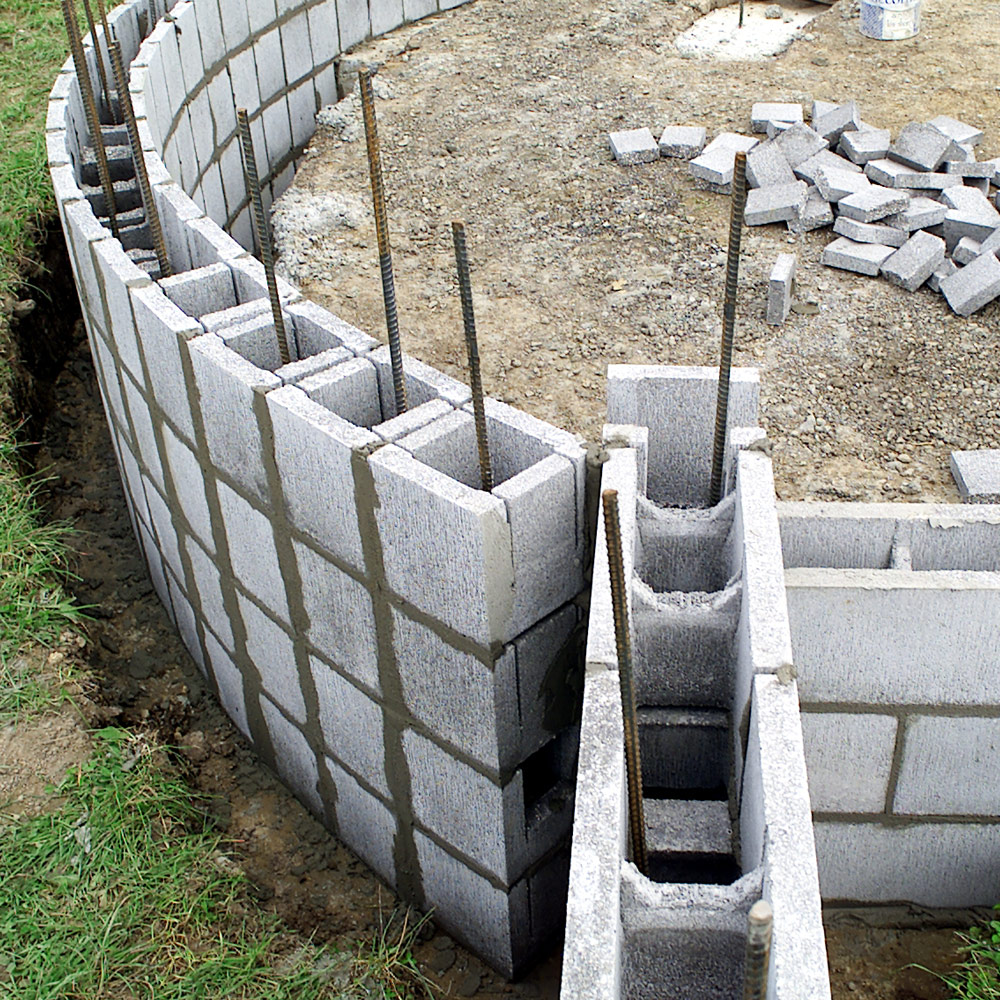
Commercial Grey Masonry Firth Concrete Blocks
The project called for two gable-end reinforced masonry walls that would perform an unusual structural function: provide the support necessary to offset the centerlines of two large masonry chimney flues that traveled as far as 8 feet horizontally from the fireplaces they served. This unique arrangement allowed the chimneys to pass through the.
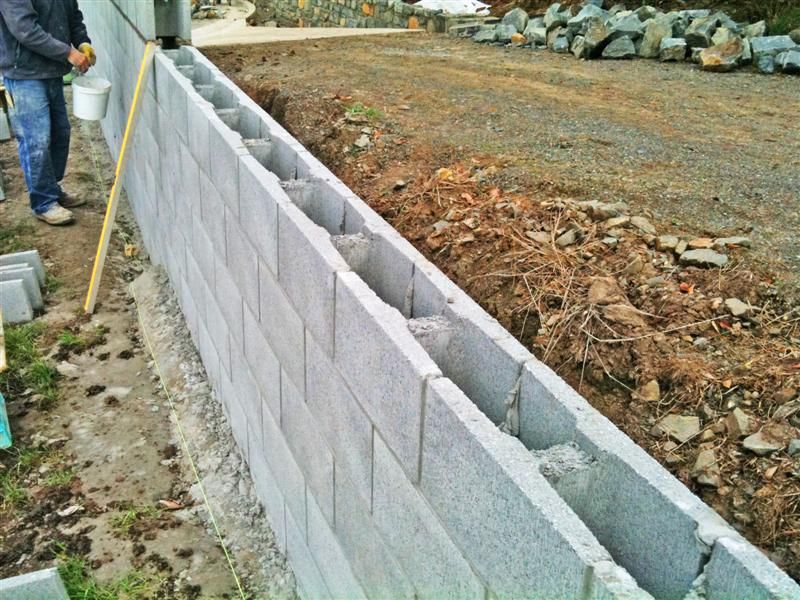
Retaining Walls Reinforced Block Walls Island Block & Paving
Step 1: Lay Four Courses Lay your first four courses (layers) of the concrete block wall. On the fourth course, trowel a skim coat (very thin coat) of mortar on the block. Video of the Day Step 2: Drop the Rebar Hollow concrete blocks have two openings, referred to as cells.
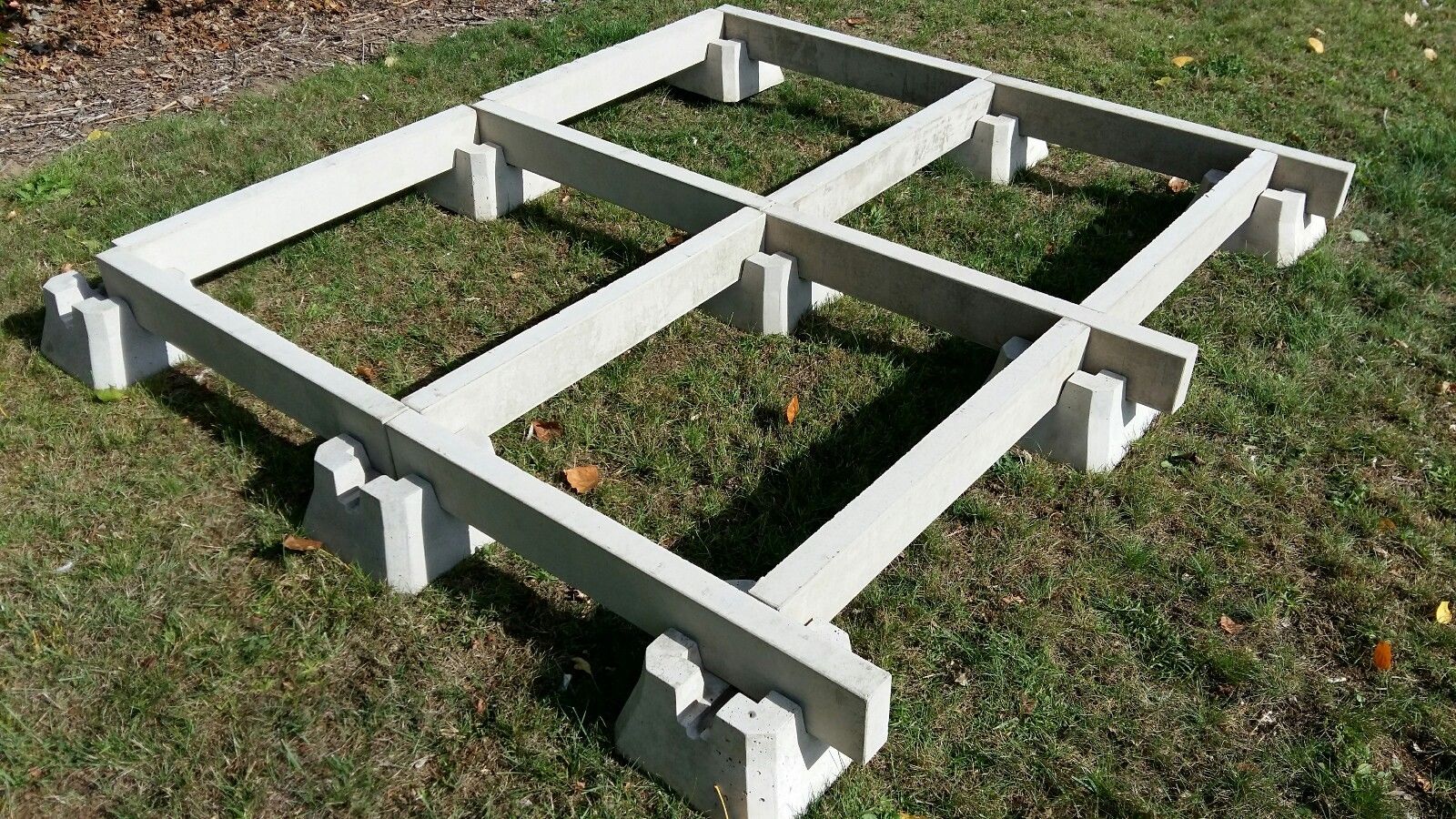
Reinforced Concrete Beam (Beam & Block System) Wrekin Concrete Products Telford, Shropshire
Fill Hollow Cores The vast majority of concrete block are hollow. When laid on their side and stacked in an offset manner they resemble, to a degree, a honeycomb made by a hive of bees. Bees fill the void spaces of the honeycomb with honey. Your contractor should have filled the hollow spaces in the block with pea gravel concrete and steel bars.

CONCRETE BLOCK WALLS The New Zealand's First Passive House
The absolute necessity for "Clean-out blocks" to be documented on structural drawings for the bottom course of all core-filled, reinforced concrete block walls. A highlighted "Hold Point" note should included on the structural drawing that "The clean-out cavity is inspected by the structural engineer, to ensure it is clear of mortar.
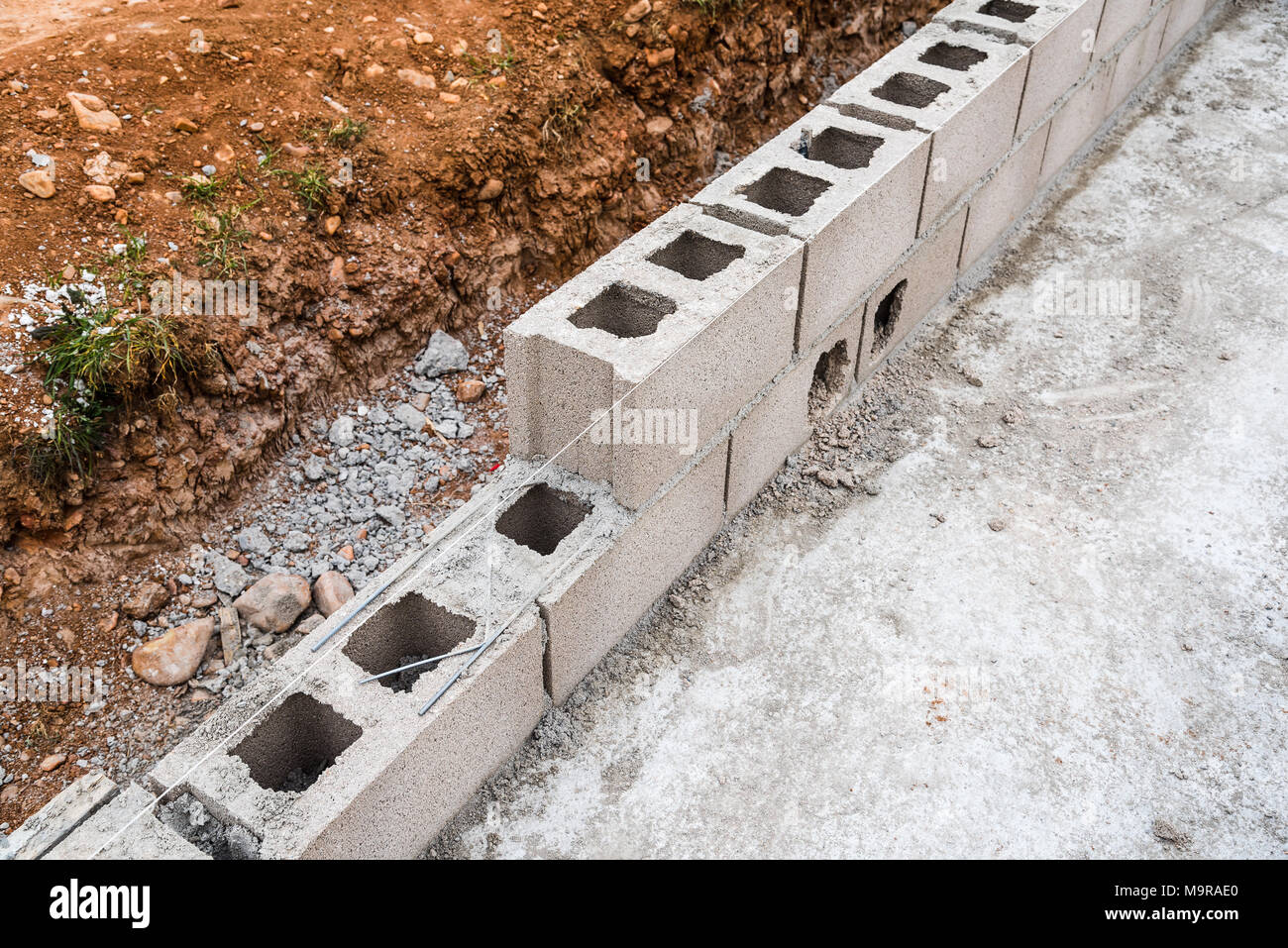
Detail of loadbearing reinforced concrete blocks wall under construction Stock Photo Alamy
Reinforced Concrete Block This efficient and economical masonry system allows a single layer of concrete block to serve as the structure and the exposed surface of the wall. Back Recommended Building Types Benefits Special Considerations Definition and Assumptions Regional Variations Fire Rating (hours) Sound Transmission Class (dB)

Stack of Reinforced Concrete Blocks at a Construction Site Stock Image Image of capacity
Reinforced Walls Reinforced walls from Redi-Rock benefit from the sheer size of the precast modular blocks and from stabilizing the soil behind the wall. Whether using geogrid or earth anchors, Redi-Rock reinforced walls can help achieve wall heights over 50 feet (15 meters). Watch the Video Why Choose a Reinforced Wall?

CONCRETE BLOCK WALLS The New Zealand's First Passive House
Villeneuve-sur-Lot (French pronunciation: [vilnœv syʁ lɔt]; in the Languedocien dialect of Occitan language: Vilanuèva d'Òlt [bilaˈnwɛβɔ ˈðult]) is a town and commune in the southwestern French department of Lot-et-Garonne.The commune was formerly named Villeneuve-d'Agen.. Villeneuve-sur-Lot is located 22 km northeast of the commune of Agen and straddles the river Lot.
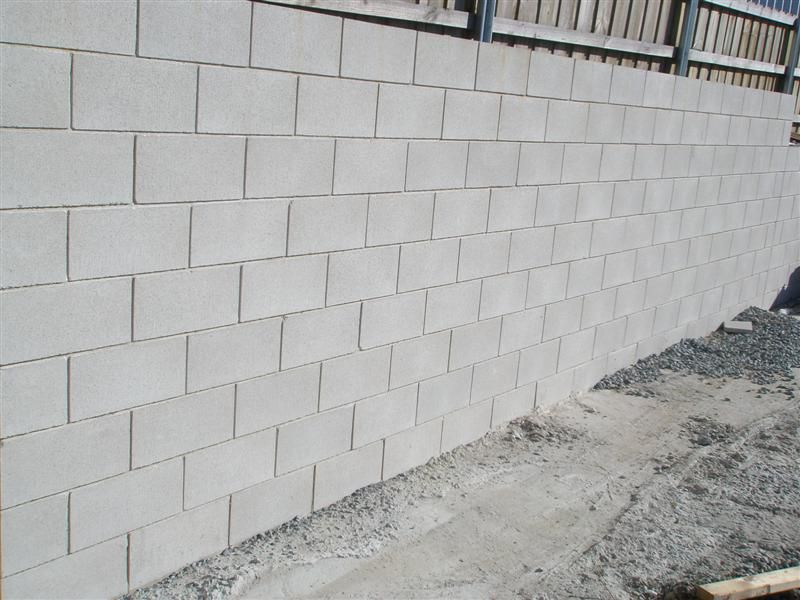
Retaining Walls Reinforced Block Walls Island Block & Paving
Hollow concrete blocks come in three grades: Grade A has a minimum density of 1,500 kg/m3. Grade B has a density of less than 1,500 kg/m3. Grade C has a density greater than 1,000 kg/m3. Grades A and B are used for load-bearing concrete block walls, while grade C is used for non-load-bearing walls. Hollow blocks come in several types, which are.

Concrete Block Foundation Advantages and Disadvantages of Concrete Block Foundations
Description Reinforcing schemes are generally designed to resist tensile stresses in particular regions of the concrete that might cause unacceptable cracking and/or structural failure. Modern reinforced concrete can contain varied reinforcing materials made of steel, polymers or alternate composite material in conjunction with rebar or not.